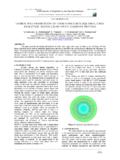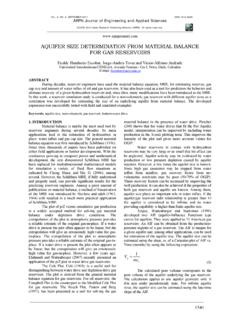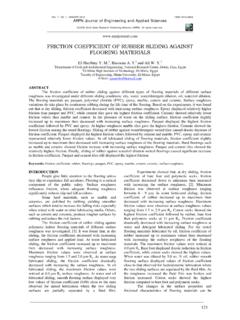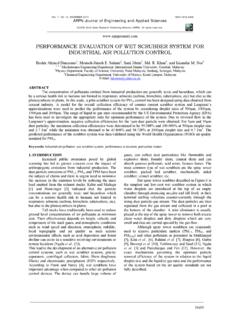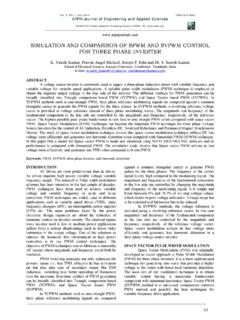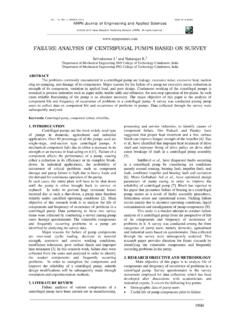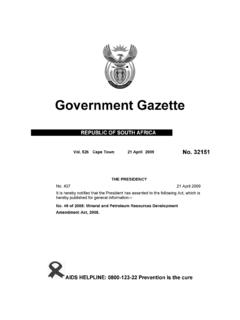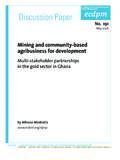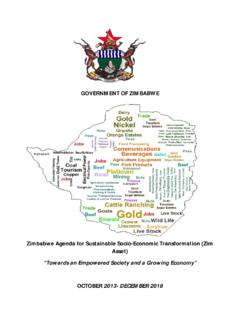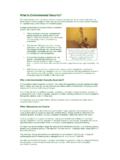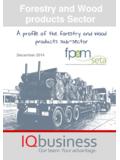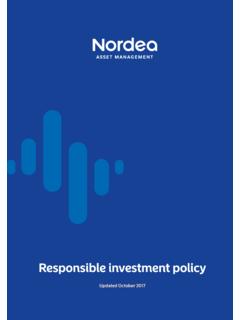Transcription of IMPACT OF ILLEGAL MINING ON WATER ... - ARPN …
1 VOL. 2, NO. 3, SEPTEMBER 2013 ISSN 2305-493X ARPN Journal of Earth Sciences 2006-2013 Asian Research Publishing Network (ARPN). All rights reserved. 117 IMPACT OF ILLEGAL MINING ON WATER RESOURCES FOR DOMESTIC AND IRRIGATION PURPOSES Amankwah Emmanuel Department of Agricultural Engineering, Wa Polytechnic, UWR, Ghana E-Mail: ABSTRACT This paper reviews the IMPACT of ILLEGAL MINING on WATER resources for irrigation and domestic application in Ghana.
2 It was carried out by reviewing literature and media information as well as interviews and observation of small scale MINING activities in MINING communities especially ILLEGAL MINING popularly called galamsey in Ghana. It was observed during the process that the MINING activities are quite lucrative and offer jobs to many of the youth as well as women who sell at these MINING communities across the country. The small scale MINING also contributes significantly to GDP in Ghana. However, the activities of the small scale MINING have affected several WATER bodies especially Pra, Ankobra and Birim Rivers as well as smaller rivers in the MINING communities.
3 Many of these WATER bodies have also been polluted to the extent that it is difficult for communities to rely on for domestic and irrigation purposes. Forest reserves, farms and agricultural lands have also been affected negatively. Many lives have also been lost over the years and continue to be lost through ILLEGAL MINING . The research also outlined the challenges associated with ILLEGAL MINING activities, potential IMPACT on WATER resources and the environment, and suggested possible mitigation measures which if considered could help address the issue of ILLEGAL MINING activities in the Ghana.
4 Keywords: ILLEGAL MINING , WATER resources, pollution, irrigation, deforestation. INTRODUCTION Ghana is endowed with many natural resources such as gold, manganese, bauxite and diamond. According to Coakley (1999), Ghana places an enviable position in the MINING sector in Africa being the second largest gold producer apart from South Africa, the 3rd largest producer of aluminium metal and manganese ore and produces appreciable amount of bauxite and diamond. However, the sector has not been without challenges especially ILLEGAL MINING . ILLEGAL MINING popularly called galamsey has been a major concern in recent times in Ghana.
5 There has been series of reported incidents of ILLEGAL MINING over the last couple of years resulting in the lost of many young lives. According to Dr. Toni Aubynn, the CEO of the Ghana Chamber of Mines, about 300 people lost their lives in 2011 through ILLEGAL small scale MINING activities. It was also reported that in a single incidence over 100 ILLEGAL miners died when the pit in which they were operating caved in near Dunkwa-on-Offin in the Central region. There has been series of reported cases of collapse MINING pits in the media including a collapse of MINING pit (loose) which trapped and killed about 15 people in Aboso and another collapse of embankment in Akyempim near Dunkwa claiming several lives of which only 17 bodies were able to be removed by the rescue team.
6 Children have also lost their lives by accidentally falling into abandoned pits especially in communities closed to the areas where these ILLEGAL miners operate. Besides such unfortunate incidents, ILLEGAL miners have caused and continue to cause irreparable havoc to the environment especially waters bodies which serve as sources of WATER for domestic, industrial and irrigation purposes. Pollution of soil and WATER bodies with mercury, sludge and other chemicals, destruction of farms and farm lands, degradation of land and vegetation, deforestation, lost of biodiversity, encroachment of forest and game reserves among others have been the order of the day due to ILLEGAL MINING .
7 For instance, it is reported that the Birim and Densu Rivers in the Eastern region which serve as a source of drinking WATER for several communities have gravely been affected by small-scale MINING activities. The Pra and Ankobra Rivers in the Western region as well as other smaller rivers and streams have also not been spared. The uncontrolled activities of ILLEGAL MINING compelled the Ghana WATER Company Limited (GWCL) which takes its WATER source from the Birim River to temporarily shut down its WATER treatment plant at Kyebi in the Eastern Region due to extreme pollution by the ILLEGAL miners (Modernghana news, 2011).
8 The situation is similar in other areas which has always increased the cost of WATER treatment by these companies. The Atewa forest reserve which protects the headwaters of the Birim and Densu rivers is also threatened by MINING activities in the region. The indiscriminate use of mercury (Hg) to amalgamate the gold by these ILLEGAL miners is also a source of concern since the handling of this important element is not controlled or regulated. In Ghana, it is established that human activities is the basic source of environmental Hg pollution (Hilson and Pardie, 2006) and this is due to the inappropriate method of amalgamating the gold particles (Swain et al.)
9 , 2007). A research conducted by Oduro et al. (2012) found out that the main Pra river and its tributaries have ( ng/ml) and ( ng/ml) average dissolved Hg concentration respectively which are far above the WHO guideline value of ng/ml due to ILLEGAL gold MINING activities along the stretch of the Pra River. Since river bodies are not stagnant but flow from upstream to downstream, the pollutants travel downstream making it impossible for communities along that stretch of the river to make use of the river. VOL.
10 2, NO. 3, SEPTEMBER 2013 ISSN 2305-493X ARPN Journal of Earth Sciences 2006-2013 Asian Research Publishing Network (ARPN). All rights reserved. 118 Harada et al. (2001) clearly stated that the effect of Hg pollution does not remain at the place where it is polluted but travels several kilometers radius from the point of discharge. It is estimated that about 650-1000 tonnes of Hg is deliberately released annually to the environment globally and artisanal small scale MINING is the major culprit to such incidence (UNEP, 2008).
